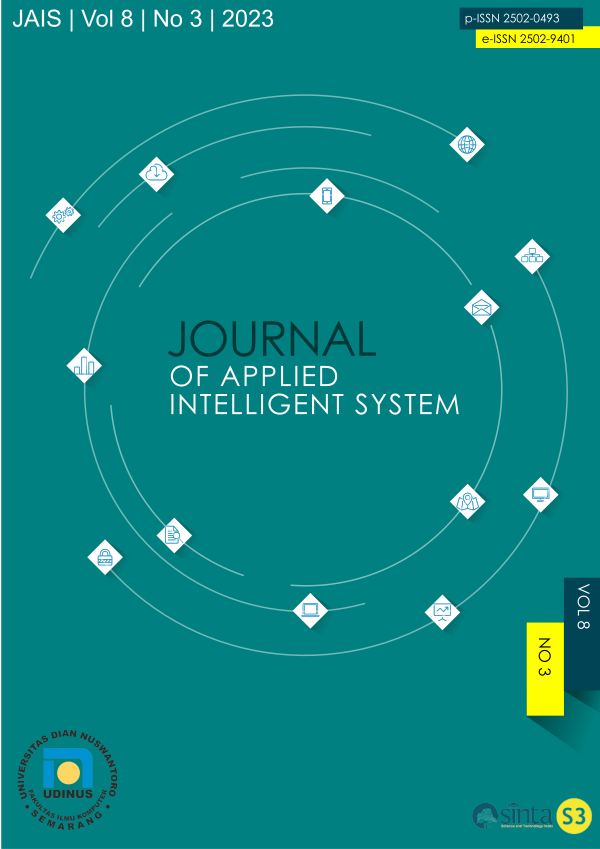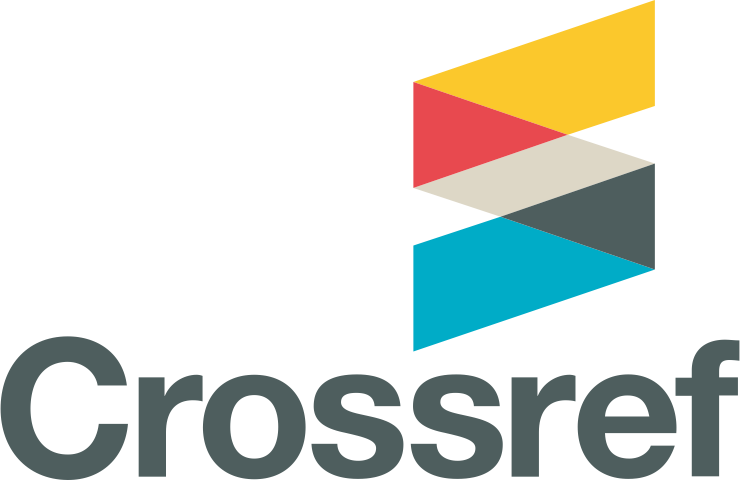Enhancing Augmentation-Based Resnet50 for Car Brand Classification
DOI:
https://doi.org/10.33633/jais.v8i3.9385Abstract
This research focuses on car classification and the use of the ResNet-50 neural network architecture to improve the accuracy and reliability of car detection systems. Indonesia, as one of the countries with high daily mobility, has a majority of the population using cars as the main mode of transportation. Along with the increasing use of cars in Indonesia, many automotive industries have built factories in this country, so the cars used are either local or imported. The importance of car classification in traffic management is a major concern, and vehicle make and model recognition plays an important role in traffic monitoring. This study uses the Vehicle images dataset which contains high-resolution images of cars taken from the highway with varying viewing angles and frame rates. This data is used to analyze the best- selling car brands and build car classifications based on output or categories that consumers are interested in. Digital image processing methods, machine learning, and artificial neural networks are used in the development of automatic and real-time car detection systems.The ResNet-50 architecture was chosen because of its ability to overcome performance degradation problems and study complex and abstract features from car images. Residual blocks in the ResNet architecture allow a direct flow of information from the input layer to the output layer, overcoming the performance degradation problem common in neural networks. In this paper, we explain the basic concepts of ResNet-50 in car detection and popular techniques such as optimization, augmentation, and learning rate to improve performance and accuracy. in this study, it is proved that ResNet has a fairly high accuracy of 95%, 92% precision, 93% recall, and 92% F1-Score.References
H. Paul, A. Sartika Wiguna, and H. Santoso, “Penerapan Algoritma Support Vector Machine Dan Naive Bayes Untuk Klasifikasi Jenis Mobil Terlaris Berdasarkan Produksi Di Indonesia,” 2023.
M. Ali, M. A. Tahir, and M. N. Durrani, “Vehicle images dataset for make and model recognition,” Data Brief, vol. 42, Jun. 2022, doi: 10.1016/j.dib.2022.108107.
R. Walambe, A. Marathe, and K. Kotecha, “Multiscale object detection from drone imagery using ensemble transfer learning,” Drones, vol. 5, no. 3, Sep. 2021, doi: 10.3390/drones5030066.
U. Mittal, P. Chawla, and R. Tiwari, “EnsembleNet: a hybrid approach for vehicle detection and estimation of traffic density based on faster R-CNN and YOLO models,” Neural Comput Appl, vol. 35, no. 6, pp. 4755–4774, Feb. 2023, doi: 10.1007/s00521-022-07940-9.
D. Komolovaite, A. Krisciunas, I. Lagzdinyte-Budnike, A. Budnikas, and D. Rentelis, “Vehicle Make Detection Using the Transfer Learning Approach,” Elektronika ir Elektrotechnika, vol. 28, no. 4, pp. 55–64, 2022, doi: 10.5755/j02.eie.31046.
O. Bourja et al., “End-to-End Car Make and Model Classification using Compound Scaling and Transfer Learning,” 2022. [Online]. Available: www.ijacsa.thesai.org
A. Ammar, A. Koubaa, M. Ahmed, A. Saad, and B. Benjdira, “Vehicle detection from aerial images using deep learning: A comparative study,” Electronics (Switzerland), vol. 10, no. 7, Apr. 2021, doi: 10.3390/electronics10070820.
Z. Liu, T. Lian, J. Farrell, and B. Wandell, “Soft Prototyping Camera Designs for Car Detection Based on a Convolutional Neural Network.”
C. Shorten, T. M. Khoshgoftaar, and B. Furht, “Deep Learning applications for COVID-19,” J Big Data, vol. 8, no. 1, Dec. 2021, doi: 10.1186/s40537-020-00392-9.
Z. Li, F. Liu, W. Yang, S. Peng, and J. Zhou, “A Survey of Convolutional Neural Networks: Analysis, Applications, and Prospects,” IEEE Trans Neural Netw Learn Syst, vol. 33, no. 12, pp. 6999–7019, Dec. 2022, doi: 10.1109/TNNLS.2021.3084827.
C. Garbin, X. Zhu, and O. Marques, “Dropout vs. batch normalization: an empirical study of their impact to deep learning,” Multimed Tools Appl, vol. 79, no. 19–20, pp. 12777–12815, May 2020, doi: 10.1007/s11042-019-08453-9.
S. Technicka? univerzita (Kos?ice, IEEE Hungary Section, M. IEEE Systems, and Institute of Electrical and Electronics Engineers, SAMI 2020 : IEEE 18th World Symposium on Applied Machine Intelligence and Informatics : proceedings : January 23-25, 2020, Herl’any, Slovakia.
J. Kim and D. Lee, “Facial Expression Recognition Robust to Occlusion and to Intra-Similarity Problem Using Relevant Subsampling,” Sensors, vol. 23, no. 5, Mar. 2023, doi: 10.3390/s23052619.
S. H. S. Basha, S. R. Dubey, V. Pulabaigari, and S. Mukherjee, “Impact of fully connected layers on performance of convolutional neural networks for image classification,” Neurocomputing, vol. 378, pp. 112–119, Feb. 2020, doi: 10.1016/j.neucom.2019.10.008.
Aristoteleio Panepiste?mio Thessalonike?s. Research Dissemination Center and Institute of Electrical and Electronics Engineers, 2019 8th International Conference on Modern Circuits and Systems Technologies (MOCAST) : May 13-15, 2019, Aristotle University Research Dissemination Center (KEDEA), Thessaloniki, Greece.
K. He, X. Zhang, S. Ren, and J. Sun, “Deep Residual Learning for Image Recognition,” 2016. [Online]. Available: http://image-net.org/challenges/LSVRC/2015/
D. Sarwinda, R. H. Paradisa, A. Bustamam, and P. Anggia, “Deep Learning in Image Classification using Residual Network (ResNet) Variants for Detection of Colorectal Cancer,” in Procedia Computer Science, Elsevier B.V., 2021, pp. 423–431. doi: 10.1016/j.procs.2021.01.025.
L. Wen, X. Li, and L. Gao, “A transfer convolutional neural network for fault diagnosis based on ResNet-50,” Neural Comput Appl, vol. 32, no. 10, pp. 6111–6124, May 2020, doi: 10.1007/s00521-019-04097-w.
E. D. Cubuk, B. Zoph, V. Vasudevan, and Q. V Le Google Brain, “AutoAugment: Learning Augmentation Strategies from Data,” 2019. [Online]. Available: https://pillow.readthedocs.io/en/5.1.x/
H. Inoue, “Data Augmentation by Pairing Samples for Images Classification,” Jan. 2018, [Online]. Available: http://arxiv.org/abs/1801.02929
Z. Zhong, L. Zheng, G. Kang, S. Li, and Y. Yang, “Random Erasing Data Augmentation.” [Online]. Available: https://github.com/zhunzhong07/Random-Erasing.
Downloads
Published
Issue
Section
License
Copyright (c) 2023 Triga Agus Sugiarto, Moch Arief Soeleman, Pujiono

This work is licensed under a Creative Commons Attribution-NonCommercial 4.0 International License.
- Authors retain copyright and grant the journal right of first publication with the work simultaneously licensed under a Creative Commons Attribution License that allows others to share the work with an acknowledgment of the work's authorship and initial publication in this journal.
- Authors are able to enter into separate, additional contractual arrangements for the non-exclusive distribution of the journal's published version of the work (e.g., post it to an institutional repository or publish it in a book), with an acknowledgment of its initial publication in this journal.
- Authors are permitted and encouraged to post their work online (e.g., in institutional repositories or on their website) prior to and during the submission process, as it can lead to productive exchanges, as well as earlier and greater citation of published work (See The Effect of Open Access).









